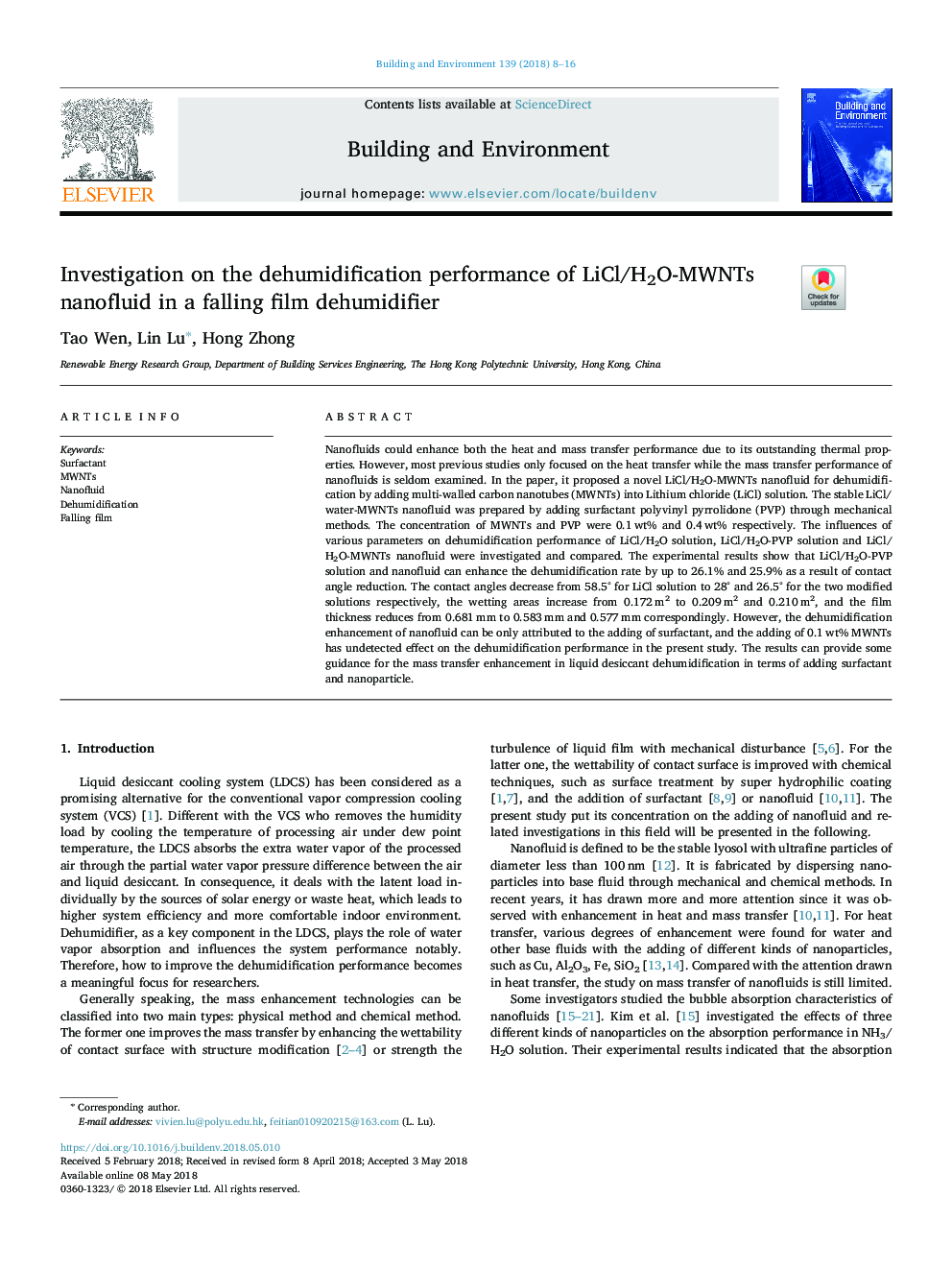| Article ID | Journal | Published Year | Pages | File Type |
|---|---|---|---|---|
| 6697059 | Building and Environment | 2018 | 9 Pages |
Abstract
Nanofluids could enhance both the heat and mass transfer performance due to its outstanding thermal properties. However, most previous studies only focused on the heat transfer while the mass transfer performance of nanofluids is seldom examined. In the paper, it proposed a novel LiCl/H2O-MWNTs nanofluid for dehumidification by adding multi-walled carbon nanotubes (MWNTs) into Lithium chloride (LiCl) solution. The stable LiCl/water-MWNTs nanofluid was prepared by adding surfactant polyvinyl pyrrolidone (PVP) through mechanical methods. The concentration of MWNTs and PVP were 0.1â¯wt% and 0.4â¯wt% respectively. The influences of various parameters on dehumidification performance of LiCl/H2O solution, LiCl/H2O-PVP solution and LiCl/H2O-MWNTs nanofluid were investigated and compared. The experimental results show that LiCl/H2O-PVP solution and nanofluid can enhance the dehumidification rate by up to 26.1% and 25.9% as a result of contact angle reduction. The contact angles decrease from 58.5° for LiCl solution to 28° and 26.5° for the two modified solutions respectively, the wetting areas increase from 0.172â¯m2 to 0.209â¯m2 and 0.210â¯m2, and the film thickness reduces from 0.681â¯mm to 0.583â¯mm and 0.577â¯mm correspondingly. However, the dehumidification enhancement of nanofluid can be only attributed to the adding of surfactant, and the adding of 0.1â¯wt% MWNTs has undetected effect on the dehumidification performance in the present study. The results can provide some guidance for the mass transfer enhancement in liquid desiccant dehumidification in terms of adding surfactant and nanoparticle.
Related Topics
Physical Sciences and Engineering
Energy
Renewable Energy, Sustainability and the Environment
Authors
Tao Wen, Lin Lu, Hong Zhong,
